White Hubris, Greed, Disbelief Cited on Afghanistan
Kenneth J. Cooper: ‘I Always Felt Pessimistic’
Ron Claiborne: ‘An Old Story Replayed Many Times’
Ozier Muhammad: ‘GREED and Control Was the Motivation’
Tim Craig: Leaders Thought U.S. Was Bluffing
SAJA Lists How Journalists Can Help
LSU School Revisits Case of Unequal Justice
Advice Offered in Aiding Haiti’s Quake Victims
NABJ Opens Virtual Convention
Update Aug. 20: Dorothy Tucker Re-Elected President of NABJ
RTDNA Honors Diversity, Equity and Inclusion
Short Takes: Sigma Delta Chi awards; Susan King and University of N. Carolina; suspension of Detroit Tigers broadcaster; Jarvis DeBerry, Zeeshan Aleem and Ja’han Jones; truly diversifying a newsroom; Yamiche Alcindor; do paywalls benefit underserved communities?; Boston Globe Spotlight team’s prison investigation; Naomi Osaka; Maureen Dowd and Barack Obama; financial break for minority-owned media; Capital B; Black News Channel; exiled Iranian journalist; Nicaraguan journalist, daughter seek asylum; investigating a journalist’s disappearance.
Support Journal-isms*GRAPHIC WARNING* Taliban fighters use gunfire, whips, sticks and sharp objects to maintain crowd control over thousands of Afghans who continue to wait for a way out, on airport road. At least half dozen were wounded while I was there, including a woman and her child. #Kabul pic.twitter.com/a2KzNPx07R
— Marcus Yam 文火 (@yamphoto) August 17, 2021
White Hubris, Greed, Disbelief Cited on Afghanistan
Four journalists of color who have covered Afghanistan offered their thoughts on the chaotic U.S. pullout from that country and its takeover by the Taliban. The Journal-isms Roundtable will discuss the topic this coming Sunday at 1 p.m. Eastern time, to be transmitted here on Facebook Live.
Kenneth J. Cooper: ‘I Always Felt Pessimistic’
Cooper is senior editor, WGBH News, Boston, and shared a Pulitzer Prize in 1984.
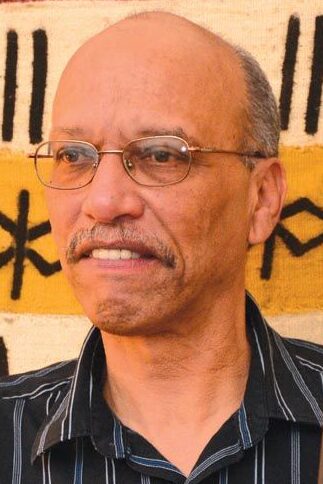 I covered Afghanistan as the Washington Post’s South Asia Bureau chief from 1996 to 1999. I went to Afghanistan seven times, the first time a month before the Taliban captured Kabul in September 1996. I was surprised at how fast the Taliban retook Kabul this time, but I shouldn’t have been. The reason the country has been at war for 40 years is that Afghans don’t do pitched battles — soldiers massing on both sides and going at it. Everybody wants to live to fight another day, and keep fighting they have.
I covered Afghanistan as the Washington Post’s South Asia Bureau chief from 1996 to 1999. I went to Afghanistan seven times, the first time a month before the Taliban captured Kabul in September 1996. I was surprised at how fast the Taliban retook Kabul this time, but I shouldn’t have been. The reason the country has been at war for 40 years is that Afghans don’t do pitched battles — soldiers massing on both sides and going at it. Everybody wants to live to fight another day, and keep fighting they have.
Afghanistan has a temperate climate, like most of the United States. It snows there. The main strategic mistake the U.S. government made was withdrawing during “fighting season,” the warm months. Armies go dormant when it’s cold. The Biden Administration blames Trump’s peace deal, which called for a withdrawal in May, and Secretary of State Antony Blinken says delaying until the fall or winter would have given the Taliban reason to resume attacking U.S, forces in the country. You can blame Trump or Biden; either way, it was a U.S. government mistake.
A recent Washington Post story about the Taliban starting to buy off Afghan commanders and soldiers immediately after that February 2020 peace deal has the ring of truth. Soldiers would apparently switch sides for $150. There’s a saying: “In Afghanistan, nobody is for sale. But everybody is for rent.” In other words, you can buy anyone’s loyalty, temporarily, until the next cash offer comes along.
The mission of building a democratic government and civil society in 20 years wasn’t going to happen. The cultural attitudes and outlook of most Afghans are stuck in centuries long past. The country has never had a strong central government and is ethnically divided. The country’s name is derived from an outdated term for Pashtuns, the dominant ethnic group and the one most Taliban belong to. Why would members of other ethnic groups pledge loyalty to a country named for another one? The warrior mentality supports never-ending warfare. The irony is the Taliban want to establish a pure Islamic state, an emirate. The religion’s very name means “peace,” but this is a country bound for continued warfare. The non-Pashtun people of the north are already gearing up to fight the Taliban.
Frankly, I have little hope that Afghanistan will ever become a stable, unified democratic country. I always felt pessimistic about the country after my visits.
Race rarely came up. On the first one, I was intrigued when a top official in the anti-Taliban government asked me about the Million Man March and “Louie” Farrakhan. He seemed genuinely curious.
After I left, a Black Washington Post reporter who rotated into Afghanistan after the 2001 U.S. invasion told me an interesting story. She hired a “fixer”–someone who sets up appointments, translates and guides foreign reporters around — whom I had previously hired. Teresa Wiltz asked the fixer if he knew any Black people. He replied: “Ken Cooper is Black. But he’s not sooooo Black.” I thought his response was hilarious because his light complexion was about the same as mine — and Teresa’s.
Ron Claiborne: ‘An Old Story Replayed Many Times’
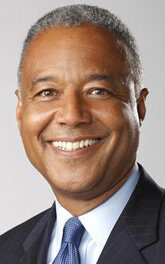 Claiborne, retired from ABC News, was in Northern Afghanistan with the Northern Alliance in the fall of 2001. He was asked what the United States did right and did wrong, and what people of color should make of it all.
Claiborne, retired from ABC News, was in Northern Afghanistan with the Northern Alliance in the fall of 2001. He was asked what the United States did right and did wrong, and what people of color should make of it all.
Did right? American intentions to make it theoretically possible for a free, pluralistic democracy to take root were a right goal but that was more aspirational (and probably naive) than an accomplishment. I believe there were well-meaning military members and diplomats who really did try to forge alliances on the ground — win hearts and minds — and I don’t doubt some did. But it wasn’t enough. It probably never would have been enough.
That the Taliban — oppressive, repressive and violent — were removed was a kind of collateral achievement. Millions of girls were educated. Music could be played. People were freed of the draconian intolerance of some genuinely bad guys.
Failures were many, including the illusion that foreigners, backed by a heavily armed occupying force that didn’t speak the language or know the culture, can impose or superimpose their vision of themselves on a country with a very different culture and history and a historical repugnance directed toward foreigners in their land. Add to that attacks and drone bombings that killed civilians and seeming acceptance if not complicity with a corrupt central government.
I think reporters of color tend to instinctively perceive critically the scenario of the White Man forcing himself on non-White people without invitation or permission, not bothering to understand the people they were ostensibly helping, and then, however reasonably, simply giving up on them. That’s an old story that’s been replayed many times.
Ozier Muhammad: ‘GREED and Control Was the Motivation’
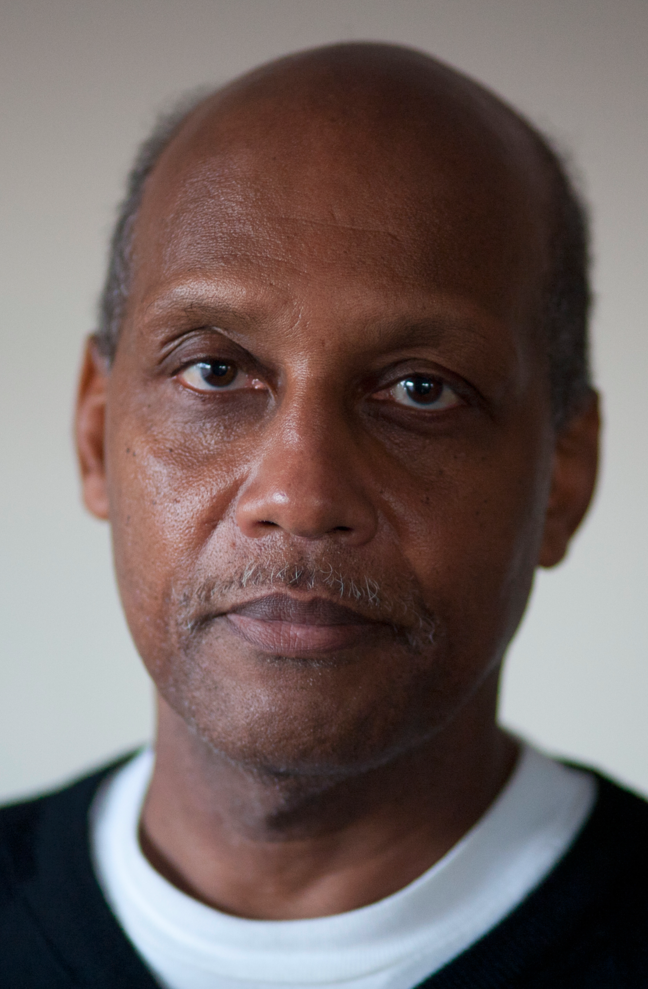 Muhammad took a buyout from The New York Times in 2014. He had been a staff photographer there since 1992 and shared a Pulitzer Prize in 1985.
Muhammad took a buyout from The New York Times in 2014. He had been a staff photographer there since 1992 and shared a Pulitzer Prize in 1985.
When I was in Kabul in ‘02, I had no doubt that [former Afghan presidents Hamid] Karzai and [Ashraf] Ghani’s goals were to become wealthy, just like their pals in Texas, no matter what the outcome of the war in Afghanistan.
IMO, our government’s involvement in Afghanistan after the Taliban melted into Pakistan early in 2002 became a transactional involvement, meaning corporate interests. The Carlyle Group, Kellogg, Brown and Root, Raytheon, Boeing, you name it.
Some critics of our involvement after 2002 considered our government’s involvement misguided nation building. It wasn’t about nation building vis-a-vis expanding American democracy, it was about expanding corporate wealth. GREED and control were the motivations. To lay claim to the regional resources in and beyond Afghanistan.
The Pentagon, perhaps unwittingly, was expanding the wealth of the arms and oil industry titans ([President George W.] Bush and [Vice President Dick] Cheney‘s longtime pals).
Why didn’t we leave after [Osama] Bin Laden was assassinated? Didn’t we go in to avenge 9/11?
We couldn’t leave, because we are an empire, and what do empires do? The answer is simple: plunder.
Poor Haiti needs to catch a break. My heart breaks for the Haitians. It does not break for the Afghans. Why? That requires a very long explanation.
 |
As someone brought up in Islam, I was hyper-aware that I was in a country of fervent believers when I was there in 2001 and ‘02, and what I have seen from afar over the years.
In my view, what the West needs to understand is that neither it nor other external powers can enforce its will on a belief system.
The war in my view morphed into a money spigot for the United States defense industries, elongating the war for profit under the guise of rescuing the Afghan women from the Taliban. The puzzling assumption to me is why we think that all Afghan women writ large want to be rescued.
Let the Afghan women and their men sort out issues of human rights in their society. Live and let live. There is a reason there aren’t any homegrown Gloria Steinems in Afghanistan, Pakistan or Iran.
Tim Craig: Leaders Thought U.S. Was Bluffing
Craig was based in Pakistan but went to Afghanistan on and off for 2 1/2 years. He wrote Journal-isms then, “Frankly, among ordinary Pakistanis, my race has really only come up a few times in the context of American movies. Currently, the Fast & Furious movie series starring Vin Diesel is wildly popular in Pakistan. When my head is shaved, people have come up to me and tell me I resemble him and that, at times, sparks a broader discussion about race in the United States.”
I worked in Afghanistan for The Washington Post from 2013 through 2016, an experience that will
always be remembered for offering some of life’s most thrilling memories as well as some of its darkest
moments.
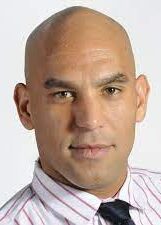 After I returned to Washington, where I work as a national correspondent for the Post, it has been hard to stay closely connected to affairs in Afghanistan. Life and work here in the U.S. was so chaotic during
After I returned to Washington, where I work as a national correspondent for the Post, it has been hard to stay closely connected to affairs in Afghanistan. Life and work here in the U.S. was so chaotic during
the Trump presidency, and many of the friends I made in Afghanistan gradually moved on to other jobs or opportunities.
But the events over the past week in Afghanistan triggered disbelief and sadness over the speed at which Kabul fell into Taliban hands. There are no easy answers here, a point that I believe has often been glossed over in some of the initial analysis over who is to blame for this crisis.
 One column I read this week, however, sort of sums up my views of the matter. Writing in Foreign Affairs, Vanda Felbab-Brown (pictured), a senior fellow at the Brookings Institution, concluded:
One column I read this week, however, sort of sums up my views of the matter. Writing in Foreign Affairs, Vanda Felbab-Brown (pictured), a senior fellow at the Brookings Institution, concluded:
“The United States and other countries made plenty of mistakes in Afghanistan. Pakistan duplicitously enabled the Taliban. But the principal responsibility for this tragic end to 20 years of state-building efforts in Afghanistan lies squarely with the Afghan leadership.”
Felbab-Brown notes, correctly, the U.S. pullout did not occur overnight, and goes on to question why the Afghan government – and more broadly, its institutions – did not do more to prepare for this eventuality. In fact, the U.S. government and public have been strongly signaling and preparing to leave Afghanistan for [a] decade.
Even while I was there, the number of U.S. troops steadily declined, resulting in numerous stories from me about how military bases were closing and how the footprint of NATO forces was rapidly shrinking.
Yet when I would talk to Afghan leaders, generals or citizens, it was clear that most were not grasping that the NATO mission really was on the verge of ending. I would ask questions about what they were doing to prepare, or how Afghan forces would fight without American support, and was mostly greeted with blank stares or filibustering. Some would even say outright that they thought U.S. and NATO leaders were bluffing.
Had Afghan leaders taken those cues more seriously, would it have made a difference over the past week? I don’t know. But as anyone who has prepared for a coming storm can attest, you need to be ready mentally, strategically and with a plan – all of which appeared to be lacking as the Taliban rushed into Kabul over the weekend.
It is now heartbreaking to think how that absence of Afghan leadership stands to upend the lives of so many Afghans, especially in Kabul, where younger residents were benefiting from a diverse education that was helping them to gradually become more respectful of religious, ethnic and sexual minorities.
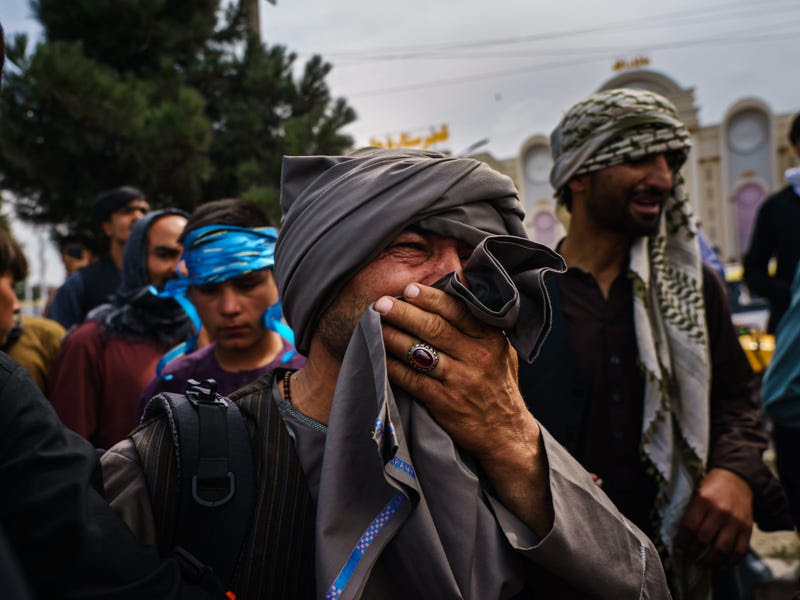
The median age in Afghanistan is only 19, so much of the country was not even born when the U.S mission there began after the Sept 11, 2001, terrorist attacks.
The only life many urban Afghans know is one that includes many of the same trappings of the Western world, including copying fashion trends from Hollywood or European soccer stars and visiting shopping malls, music stores and beauty salons.
Many of those Afghans will not easily return to living under a harsh interpretation of Islamic law, which in the short term will probably trigger a mass exodus of refugees to Europe, Canada, Turkey, India or elsewhere. In the medium term, I will not be surprised if Afghanistan still slides toward a sustained civil war, especially considering how the country is awash in guns and weapons, many of which were bought by U.S. taxpayers.
On a personal note, I was relieved to hear this week that the Washington Post was successful in evacuating our Afghan employees and their families from the country. For 20 years, they were the heroes behind our work.
But I know there are still so many other Afghans who did nice things for me, or tried to take care of me, who remain in danger.
Just on Wednesday, I received a Facebook message from one Afghan citizen who helped me out after I was in a car accident there and stranded on the side of a rural highway in 2016.
“My life in risk here,” he wrote. “I am just thinking of my life [sic] what to do in the last 31 August…If US forces leave me here, then I think the Taliban will kill me.”
Those are now the stakes for a man who I believe has been severely let down by his government and his nation’s former army.
Watching the chaotic and menacing scenes coming out of Afghanistan, @LesterHoltNBC reflects on the people he met during his time reporting in the country. pic.twitter.com/CoHJ2xH98n
— NBC Nightly News with Lester Holt (@NBCNightlyNews) August 16, 2021
SAJA Lists How Journalists Can Help
In a statement to members Wednesday, the South Asian Journalists Association listed specific news organizations that journalists can help in Afghanistan:
“SAJA would like to express its deep gratitude and support for the tireless and brave journalists of Afghanistan. Reporters Without Borders said: “At least 100 journalists, including 15 international journalists, have been killed in connection with their work in the past 20 years, while more than 60 media outlets have been destroyed or attacked and hundreds of threats have been made against journalists and media.”
“While foreign correspondents have largely had the ability to evacuate the turmoil, many local media professionals have not and remain in danger — particularly female journalists. Yet, they have continued to bring us harrowing and important video and narrative reporting.
“There is a chance our members can help if you have worked in Afghanistan and hired a national to work with you. The U.S. State Department announced a specific Refugee Admissions Program. The Afghan journalists cannot apply on their own and need a senior U.S. employee of your news outlet as a referral. There is a useful Twitter thread on the program HERE.
“If you are looking to support specific news organizations in the country, here are a few: Rukhshana Media (which has been working with The Guardian), Sahar Speaks, TOLO News. In our effort to aid our Afghan colleagues, please stay tuned to our social media channels and newsletter, where we will keep sharing information and ways we can help from abroad.
“(Here is a link to the press briefing held by the Taliban and Afghan journalists doing a phenomenal job asking them tough questions).”
- Al Jazeera: Photos: Taliban takes control of Afghan presidential palace
- Anonymous, Politico Magazine: ‘I Believed in the U.S. But That Turned Out to Be Such a Big Mistake’
- David Bauder, Associated Press: News Groups Seek To Protect Journalists In Afghanistan
- Alexis Benveniste, CNN: Afghan journalists are ‘absolutely petrified’ amid the Taliban takeover
- Committee to Protect Journalists: Taliban take 2 female state TV anchors off-air in Afghanistan, beat at least 2 journalists
- Committee to Protect Journalists: Taliban militants raid homes of at least 4 media workers in Afghanistan
- Committee to Protect Journalists: US must protect Afghan journalists as Taliban take power
- Lauren Frias, Business Insider: A photojournalist for the Los Angeles Times captured graphic images of wounded Afghans after Taliban fighters used lethal weapons to maintain crowd control at the airport
- Robin Givhan, Washington Post: America’s humiliation is more American hubris
- Saad Mohseni, Washington Post: My Afghan news channel won’t stop its important work. We hope the world doesn’t look away.
- Condoleezza Rice, Washington Post: The Afghan people didn’t choose the Taliban. They fought and died alongside us.
- Gregory Shupak, Fairness & Accuracy In Reporting: As Kabul Is Retaken, Papers Look Back in Erasure
- Margaret Sullivan, Washington Post: The Afghan debacle lasted two decades. The media spent two hours deciding whom to blame.
- Stephen Walt, Daniela Schwarzer, Husain Haqqani, “The Real Story,” BBC: America after Afghanistan: What will allies and rivals conclude about future US willingness to engage overseas? (podcast)
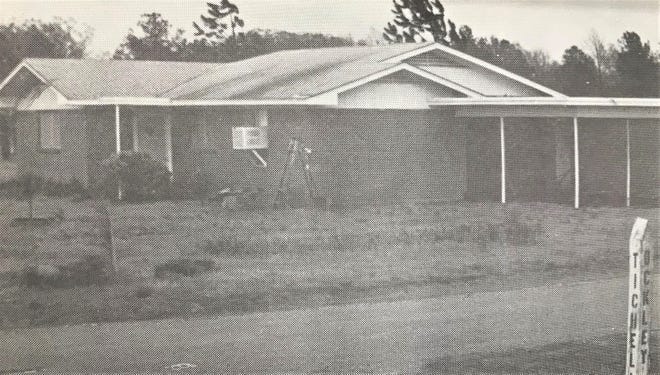
LSU School Revisits Case of Unequal Justice
“During the 1950s in northeast Louisiana, future Klansman Robert Fuller (pictured below) was a familiar face to law enforcement,” Rachel Mipro wrote in the first of a four-part series for the Manship School News Service at Louisiana State University, running in the Daily Advertiser of Lafayette, La. It began Sunday.
 “He lived on the outskirts of Monroe. Local police considered Fuller a thug, and the FBI opened a file on him because of his involvement in prostitution. Fuller then started a sanitation business that employed his sons and several young Black employees. Their job was to empty human waste from septic tanks.
“He lived on the outskirts of Monroe. Local police considered Fuller a thug, and the FBI opened a file on him because of his involvement in prostitution. Fuller then started a sanitation business that employed his sons and several young Black employees. Their job was to empty human waste from septic tanks.
“In July 1960, five of the Black employees showed up at his home, their normal gathering spot, one Wednesday morning. Minutes later, three were dead, a fourth mortally wounded. A fifth, also wounded, would survive.
“Fuller would later claim he shot all five in self-defense. He said he grabbed a double-barreled shotgun from his truck — reloading three times — to fend off men swarming him with knives.
“The horrific event was reported in newspapers, but two versions of the events would emerge.
“One was Fuller’s self-defense claim — that he was simply saving his family from his attackers.
“The other, in the Black press, was a story of mistreatment, of tensions over employees forced to beg for paltry wages and of racial animosity against Black employees. Black newspapers reported that Fuller owed the men money. By these accounts, there was no way Black men would attack a white man in an all-white neighborhood at a time when Blacks around the Jim Crow South were still struggling to secure their civil rights. . . .
“A lengthy investigation, including dozens of interviews and FBI files that the LSU Manship School of Mass Communication’s Cold Case Project obtained through the Freedom of Information Act, challenges Fuller’s claim of self-defense and paints a more extensive picture of what happened that day, including the possibility that Fuller had help in killing the men.
“The Manship School investigation also illuminated another potential injustice — that while Fuller, who died in 1987, was never charged with a crime, the lone survivor of the shooting was charged with trying to murder Fuller and later served time in prison.
“Racial disparities like that were typical in that day and helped fuel the suspicions that many Blacks still have about law enforcement. . . .”
“There is a saying … ‘Beyond the mountains, there are mountains.’ That is something that Haitians have become all too familiar with.”
Haiti earthquake death toll rises to nearly 1,300 people — a striking blow for a country still recovering from a series of natural disasters. pic.twitter.com/CbhZLe2ktm
— CBS News (@CBSNews) August 16, 2021
Advice Offered in Aiding Haiti’s Quake Victims
“When people donate to organizations like the Red Cross it is important to realize that first, the Red Cross takes an administrative cut, the charities that they disburse to take their own administrative cut, and then whatever is left goes to those in need,” Wen-kuni Ceant wrote Monday for The Grio under the headline, “How not to repeat the mistakes of Haiti’s 2010 earthquake and where to donate.”
Saturday’s earthquake struck 78 miles west of the capital, Port-au-Prince, according to the U.S. Geological Survey, killing at least 2,189 people and injuring more than 12,000, NBC reported.
Ceant, a member of South Florida’s Haitian community, is identified as the CEO and co-founder of Politicking, “a sociopolitical platform that demystifies the political process for millennials.”
Ceant continued, “NPR notes that these costs took up approximately a third of the money donated to the people of Haiti. Moreover, internal memos have revealed that Haitians were not being hired for top positions when it came to construction and rebuilding.
“Here’s what can be learned this time:
- “Haitian organizations and diaspora organizations alike have bound together to discourage donations in kind. Because distribution is slow and there are customs issues, CASH IS KING in these dire circumstances, as it is quickly dispersed and effective.
- “Cash must be injected into the local economy. When well-meaning foreigners send things like rice it floods the market and lowers the price of local rice, causing a further tilt in the economy that has already been destabilized by the natural disaster. The same goes for water, an extremely heavy commodity that is difficult to move. Instead of sending food and water, send money so that people can buy commodities that are already available on the ground.
- “This is NOT a time for tourism. Organizations who do not have experience with natural disasters, collapsed buildings, etc. should not attempt to provide boots on the ground services.
- “Tarp is needed — the most important thing is shelter. This is even more important than food and water.
- “It is essential to work with organizations that have been there before, during and will be there after the disaster.
Here’s also a list of trusted Haitian-led organizations:
- “National Organization for the Advancement of Haitians (noahny.org)
- “Haitian American Nurses Association (hanaofflorida.org)
- “Association Haitienne De Developpement Humain (ahdhhaiti.org)
- “Man Dodo (mandodo.org)
- “BLUME Haiti (blumehaiti.org)
- “Gaskov Clergé Foundation (gaskov.org)
- “Ayiti Community Trust (ayiticommunitytrust.org)
- “Haiti Futur (haitifutur.com)
- “Goodoo Courier (shipgoodoo.com)”
- Char Adams, NBC News: How Haitian organizations are leading their own relief efforts
- Jacqueline Charles, Miami Herald: Amnesty urges protection, action in murder probe of Haiti journalist, political activist (Aug. 6)
- Onz Chéry, Haitian Times: A new heartache: Haitian-Americans torn between instinct to help and suspicion of relief groups
- Joel Dreyfuss, Politico: Haiti’s Forgotten Asset: Its Diaspora (Aug. 10)
- Editorial, Washington Post: Haiti’s torments seem bottomless. America can and must do more.
- Emma Green, The Atlantic: The Words the AP Didn’t Want to Use: The reporter Jonathan Katz explains how he wrestled with the sins of U.S. interventions abroad — and what to call them.
- Kevin McCauley, O’Dwyer’s Public Relations: Haiti Can’t Catch a PR Break
- Fabiola Santiago, Miami Herald: We can’t keep treating Haiti’s cycle of traumas with Band-aid solutions

NABJ Opens Virtual Convention
The National Association of Black Journalists opened its second virtual convention this week with 2,416 attendees, exceeding projections by 200, Executive Director Drew Berry told the NABJ board Tuesday. [Update: On Friday, the figure was 2,511.]
As with last year’s joint convention with the National Association of Hispanic Journalists, the organization had to cut off registrations because the technology could not accommodate any more, Berry said. Last year’s joint convention drew 3,710, with 3,009 from NABJ.
President Dorothy Tucker also told the board that a project to digitize NABJ archives, in which unofficial NABJ historian Wayne Dawkins collected material from members, had completed its work. Dawkins “had literally thousands of pieces of information,” she said.
An NABJ project in which NABJ members report as well as curate news is up and running, Tucker said. A surplus resulting from the reduction in expenses because of the virtual nature of the convention will help fund the project, she added.
- National Association of Black Journalists: VP Kamala Harris, Special White House Guests Join #NABJ21 Newsmaker Plenary
Aug. 20 update from NABJ:
| Dorothy Tucker Re-Elected President of NABJ Five Additional Members Join the Board of Directors |
| Washington, D.C. — The National Association of Black Journalists (NABJ) has announced its 2021 Board of Directors election results. Results will be audited next week. Dorothy Tucker Re-Elected NABJ President Dorothy Tucker, the incumbent President of NABJ, and an award-winning investigative reporter for CBS2 Chicago was re-elected President of NABJ. Tucker received 531 votes (83%) while her opponent Manuel Smith received 111 votes (17%). Tucker previously served as NABJ VP-Broadcast, six years as a regional director, and held leadership roles in five local chapters. Ken Lemon Voted NABJ Vice President-Broadcast Ken Lemon, a reporter at WSOC-TV in Charlotte, NC, was re-elected as NABJ Vice President-Broadcast. Lemon received 596 votes (100%). He ran unopposed. Lemon is a charter member of the UNCW Communications Studies Alumni Board and is a North Carolina Certified Mediator. Amir Vera Voted NABJ Vice President-Digital Amir Vera, a writer for CNN Digital and the current president of the Atlanta Association of Black Journalists (AABJ), was elected NABJ Vice President-Digital. Vera received 586 votes (100%). He ran unopposed. Vera previously served as the public relations chair and vice president of Hampton Roads Black Media Professionals. Madison Carter Voted NABJ Secretary Madison Carter, an award-winning investigative journalist at WXIA-TV in Atlanta, was elected NABJ Secretary. Carter received 584 votes (100%). She ran unopposed. Carter served as president of the Buffalo Association of Black Journalists (BABJ) and was named News Personality of the Year by The Buffalo News. Brie Jackson Voted NABJ Region I Director Brie Jackson, a Washington, D.C.- based national correspondent for Hearst Television stations, was elected NABJ Region I Director. Jackson received 227 votes (100%). She was unopposed. Jackson has more than 15 years of experience in broadcast news specializing in several issues, including racial injustice and equity. Jackson is also the founder, and former president, of the Southwest Virginia Chapter of NABJ. Eva D. Coleman Voted Region III Director Eva D. Coleman, a national award-winning multimedia producer, college and high school media educator, was elected as NABJ Region III Director. Coleman received 187 votes (100%). She ran unopposed. Coleman is a four-time Telly Award-winning television producer and was named 2019 National Association of Black Journalists (NABJ) Journalism Educator of the Year. Tamia Fowlkes Voted NABJ Student Representative Tamia Fowlkes, a rising senior at the University of Wisconsin, was voted NABJ Student Representative. Fowlkes received 75 votes (100%). She ran unopposed. Fowlkes is majoring in Journalism and Political Science with certificates in Gender and Women’s Studies and Leadership. She is an intern at The Milwaukee Journal Sentinel. |

RTDNA Honors Diversity, Equity and Inclusion
The Radio Television Digital News Association Tuesday honored more than 100 digital, radio and television outlets as national winners of the 2021 Edward R. Murrow Awards, and in most categories were a winner for “Excellence in Diversity, Equity & Inclusion.”
- Small Market Radio: “KUNR and Noticiero Móvil’s bilingual pandemic coverage”; KUNR Public Radio, Noticiero Móvil and This Is Reno, Reno, Nev. (Story)
- Large Market Radio: Shots in the Back: Exhuming the 1970 Augusta Riot“; Georgia Public Broadcasting and Jessye Norman School of the Arts, Atlanta
- Network Radio: “Black at Mizzou: Confronting race on campus“; American Public Media, St. Paul, Minn.
- Small Market Television: “Breaking the Stigma: Fighting for Acceptance,” WMDT, Salisbury, Md.
- Large market television: “The Talk,” WWL-TV, New Orleans
- Network television: ABC News: “Turning Point,” ABC News, New York
- Small Digital News Organization: “The Hidden Burdens of Systemic Racism,” Kaiser Health News, Washington, D.C.
- Large Digital News Organization: “How US schools punish Black kids,” Vox Media, New York
Short Takes
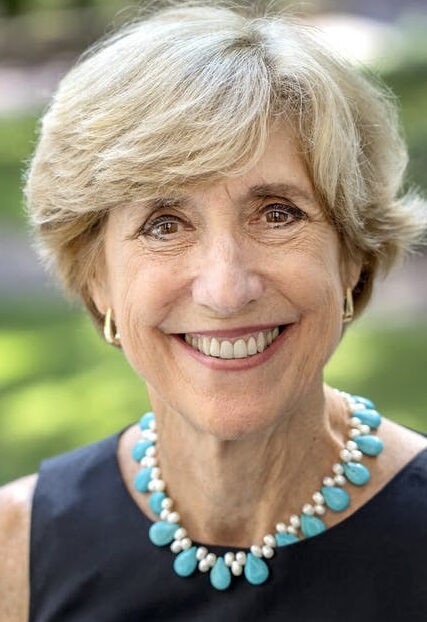 “Susan King (pictured), dean of the Hussman School of Journalism and Media, will step down this year, according to an email she sent to faculty Tuesday,” Praveena Somasundaram reported Tuesday for The Daily Tar Heel at the University of North Carolina – Chapel Hill. “King has been the dean of the journalism school since Jan. 1, 2012. She said she plans to return as a tenured faculty member after a leave. ‘It is not the same world or business even as it was in 2012 when I arrived,’ King wrote in her email. ‘I believe after 10 years a new dean will bring fresh eyes, additional perspective and new energy to our school.’ . . ” Somasundaram also wrote, “King’s departure announcement comes on the heels of a summer marked by [journalist Nikole] Hannah-Jones’ fight for tenure at UNC, which she was eventually granted but declined, with Jones taking a tenured position at Howard University instead. . . .”
“Susan King (pictured), dean of the Hussman School of Journalism and Media, will step down this year, according to an email she sent to faculty Tuesday,” Praveena Somasundaram reported Tuesday for The Daily Tar Heel at the University of North Carolina – Chapel Hill. “King has been the dean of the journalism school since Jan. 1, 2012. She said she plans to return as a tenured faculty member after a leave. ‘It is not the same world or business even as it was in 2012 when I arrived,’ King wrote in her email. ‘I believe after 10 years a new dean will bring fresh eyes, additional perspective and new energy to our school.’ . . ” Somasundaram also wrote, “King’s departure announcement comes on the heels of a summer marked by [journalist Nikole] Hannah-Jones’ fight for tenure at UNC, which she was eventually granted but declined, with Jones taking a tenured position at Howard University instead. . . .”
- “Detroit Tigers broadcaster Jack Morris has been suspended indefinitely after making a joke that mocked Asian accents while discussing Los Angeles Angels star Shohei Ohtani,” Tim Baysinger |reported Wednesday for The Wrap. Baysinger also wrote, “During Tuesday night’s game between the Tigers and Angels, Morris was discussing the Tigers’ strategy in dealing with Ohtani, who leads all of baseball with 39 home runs (despite being a pitcher). After Morris’ booth mate Matt Shepard asked, ‘Now what do you do with Shohei Ohtani?’ as Ohtani was coming up to bat, Morris replied, ‘Be very, very careful’ in what sounded like a mockery of a Japanese accent. Shepard didn’t respond but it didn’t take long for Morris to apologize. . . .”
 Jarvis DeBerry, former editorial writer and columnist for the Times-Picayune in New Orleans, former Vice and Vox reporter Zeeshan Aleem; and Ja’han Jones (pictured), who created the Black Obituary Project, illustrating the broad reach of police violence, while at HuffPost, have new roles at MSNBC. Network executives announced Thursday that DeBerry will be opinion editor, working under senior opinion editor Clarissa Pharr; Aleem will be MSNBC’s second full-time opinion columnist, and Jones is a new show blogger, blogging on msnbc.com about MSNBC shows.
Jarvis DeBerry, former editorial writer and columnist for the Times-Picayune in New Orleans, former Vice and Vox reporter Zeeshan Aleem; and Ja’han Jones (pictured), who created the Black Obituary Project, illustrating the broad reach of police violence, while at HuffPost, have new roles at MSNBC. Network executives announced Thursday that DeBerry will be opinion editor, working under senior opinion editor Clarissa Pharr; Aleem will be MSNBC’s second full-time opinion columnist, and Jones is a new show blogger, blogging on msnbc.com about MSNBC shows.
- Appointing a woman or a person of color is not the whole of diversifying a newsroom, according to recently promoted or hired news executives of color interviewed by Kerry Flynn Tuesday for CNN. In some cases, it is just the beginning. Danielle Belton, editor in chief of HuffPost, said, “Diversity doesn’t stop with, like, Obama becomes president and somehow everyone is like, ‘Racism is over.’ That’s not how things work. If you don’t fill in the reporter roles, the social editors, people who work in sales and audience, and all these other different roles within the news organization, if you don’t have diverse representation in those places, you don’t actually have a diverse newsroom.”
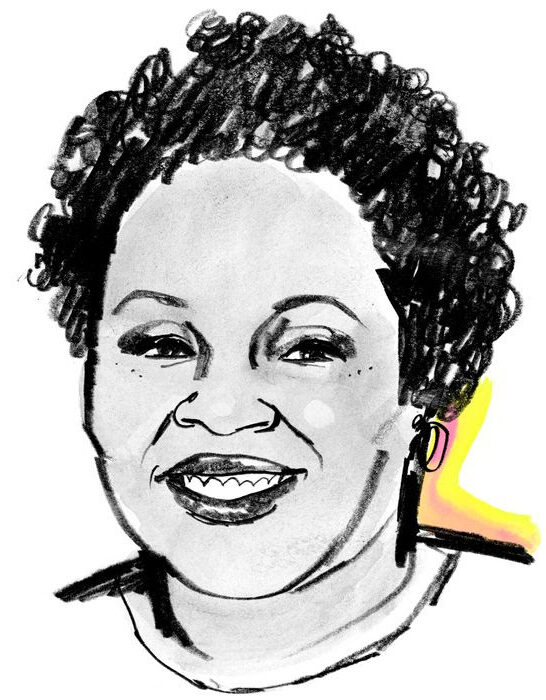 “I don’t think we can know if the media is serious about having a racial reckoning for another ten, 15 years, when we see who is being given opportunities long-term,” Yamiche Alcindor (pictured, by Lauren Tamaki) said Monday in an interview with Angelina Chapin for New York magazine’s The Cut. “When Gwen Ifill was doing Washington Week, I remember how important it was for me to look up and see a Black woman at her desk, talking about politics. In some ways I’m writing this book, hoping that the next generation of Gwen Ifills can take a little bit out of my story.”
“I don’t think we can know if the media is serious about having a racial reckoning for another ten, 15 years, when we see who is being given opportunities long-term,” Yamiche Alcindor (pictured, by Lauren Tamaki) said Monday in an interview with Angelina Chapin for New York magazine’s The Cut. “When Gwen Ifill was doing Washington Week, I remember how important it was for me to look up and see a Black woman at her desk, talking about politics. In some ways I’m writing this book, hoping that the next generation of Gwen Ifills can take a little bit out of my story.”
- “Many news organizations put stories about crisis situations — the COVID-19 pandemic or extreme weather events, for example — in front of their paywalls, so the information is free for anyone to access,” the American Press Institute said Tuesday. “But what about stories covering historically underserved communities? Many people in those communities can’t afford to access news coverage that directly impacts them, AP reporter Kat Stafford wrote on Twitter. That can perpetuate a longstanding problem in the news industry: ‘Too many newsrooms are writing about Black [and] brown communities for white-majority audiences.’ ”
- “State lawmakers are calling for greater scrutiny of the Massachusetts Department of Correction, after a Boston Globe Spotlight story on Sunday highlighted a raft of excessive force allegations by prisoners at the maximum-security Souza-Baranowski Correctional Center during and shortly after a lockdown in early 2020,” Mark Arsenault reported Monday for the Boston Globe. ” ‘Having been to Souza during the lockdown and seen the dog bites and taser marks with my own eyes, I am not surprised by this article,’ said state Representative Lindsay Sabadosa, a Northampton Democrat, in a social media post. ‘I am dismayed to see the DOC put in writing that legislators should be ignored, and even more dismayed that the Governor chose not to comment.’ . . .”
 “A reporter who participated in Naomi Osaka’s (pictured) latest news conference appears to have reinforced the athlete’s decision to limit interactions with the media,” Cydney Contreras reported Tuesday for E! “On Monday, Aug. 16, the tennis star spoke with press ahead of her appearance at the Ohio WTA tournament, before stepping away in tears after Cincinnati Enquirer reporter Paul Daugherty asked a ‘fairly aggressively toned question about how she benefits from a high-media profile but doesn’t like talking to media,’ according to tweets from The New York Times reporter Ben Rothenberg. The sports writer noted, ‘Osaka tried to engage, but after her answer began crying.’.”
“A reporter who participated in Naomi Osaka’s (pictured) latest news conference appears to have reinforced the athlete’s decision to limit interactions with the media,” Cydney Contreras reported Tuesday for E! “On Monday, Aug. 16, the tennis star spoke with press ahead of her appearance at the Ohio WTA tournament, before stepping away in tears after Cincinnati Enquirer reporter Paul Daugherty asked a ‘fairly aggressively toned question about how she benefits from a high-media profile but doesn’t like talking to media,’ according to tweets from The New York Times reporter Ben Rothenberg. The sports writer noted, ‘Osaka tried to engage, but after her answer began crying.’.”
- “”The lavish Martha’s Vineyard party former president Barack Obama had with a few hundred mostly maskless friends last week has been the subject of multiple Twitter-based controversies, the most recent of which is swirling around liberal New York Times columnist Maureen Dowd, who criticized the whole thing rather viciously on Saturday,” Caleb Howe reported Saturday for Mediaite. Howe also wrote, “liberals and Democrats unleashed hell on Dowd all afternoon.”
- Dentsu International, a multinational media and digital marketing communications company headquartered in London, “has updated payment terms to 30-days for all minority-owned media partners in the United States. Dentsu says the industry payment terms of 60, and up to 120 days, have put an enormous strain on minority owned media businesses, especially the smaller ones,” Radio Ink reported Saturday. Jim Winston, president of the National Association of Black Owned Broadcasters, said in a statement, “This announcement by Dentsu is huge. If we can get other agencies and advertisers on board, it will be a major game-changer for minority owned broadcasters across the country.”
- The founders of Capital B, the recently launched nonprofit local and national Black news organization, “are excited to announce that our first local Capital B newsroom will be in Atlanta,” Lauren Williams, cofonder and CEO, and Akoto Ofori-Atta, cofounder and executive editor, announced Thursday on Twitter.
- “The Black News Channel, which launched last year and is now available in more than 52 million households, is seriously considering moving its headquarters from Tallahassee, Florida, to Atlanta, according to its CEO and president Princell Hair, who joined BNC in July 2020,” Rodney Ho reported Wednesday for the Atlanta Journal-Constitution.
- “The organisation that represents British newspaper editors has withdrawn its claim that the UK media is not racist or bigoted, after six months of pressure from journalists of colour who said it did not reflect their experience of the industry,” Jim Waterson reported Wednesday for The Guardian. “he Society of Editors said it would now work to improve diversity in the industry and would no longer stand by statements made in March by its former director Ian Murray. He had strongly disputed claims by the Duchess of Sussex that negative coverage of her relationship with her husband, Prince Harry, was motivated by her skin colour. . . .”
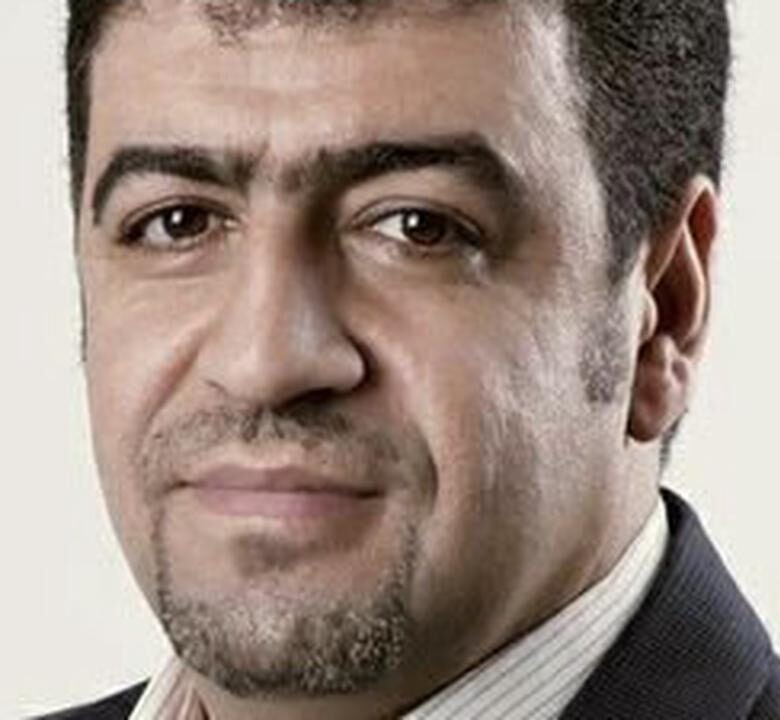 “In a rare phone interview – few Iranian exiled journalists released from prison are willing to go on the record for fear of retaliation – [Nejat] Bahrami (pictured), Bahrami spoke with CPJ about his arrest, fighting COVID-19 in prison, and the vulnerabilities journalists face even after they flee Iran,” the Committee to Protect Journalists reported Aug. 12. “I almost died of coughing and high fever. I couldn’t even take a single step. But I eventually survived. Those were the worst, darkest days of my life. Only god knows how many didn’t survive,” Bahrami said. “Hearing news about how Iranian authorities are going beyond the country’s borders to kidnap journalists and force them back into its borders shows how vulnerable we are — with no immunity and impunity for the offenders. It also shows what the regime can do to local journalists who don’t even have support from any international governments, media, or rights organizations. It makes you stop, doubt, and think twice about whether the work you are doing is worth continuing and risking your life and your loved ones. It’s very scary. . . .”
“In a rare phone interview – few Iranian exiled journalists released from prison are willing to go on the record for fear of retaliation – [Nejat] Bahrami (pictured), Bahrami spoke with CPJ about his arrest, fighting COVID-19 in prison, and the vulnerabilities journalists face even after they flee Iran,” the Committee to Protect Journalists reported Aug. 12. “I almost died of coughing and high fever. I couldn’t even take a single step. But I eventually survived. Those were the worst, darkest days of my life. Only god knows how many didn’t survive,” Bahrami said. “Hearing news about how Iranian authorities are going beyond the country’s borders to kidnap journalists and force them back into its borders shows how vulnerable we are — with no immunity and impunity for the offenders. It also shows what the regime can do to local journalists who don’t even have support from any international governments, media, or rights organizations. It makes you stop, doubt, and think twice about whether the work you are doing is worth continuing and risking your life and your loved ones. It’s very scary. . . .”

- “Journalist Marisol Balladares Blanco and her daughter Gloria Elena Escorcia Balladares are the most recent targets of persecution, and a clear example of collateral damage of the push against freedom of expression and freedom of the press that afflict journalists in Nicaragua,” the Havana Times reported on Sunday. “Balladares and her daughter left everything in their home country, due to the persecution they endured from the Ortega-Murillo Government.” The news organization also said, “Marisol and Gloria Elena are currently in Ciudad Juarez, Mexico, with the help of an organization that is analyzing the best procedure for entering the United States and applying for political asylum. She admits that she is very worried about her and her daughter’s situation. . . .”
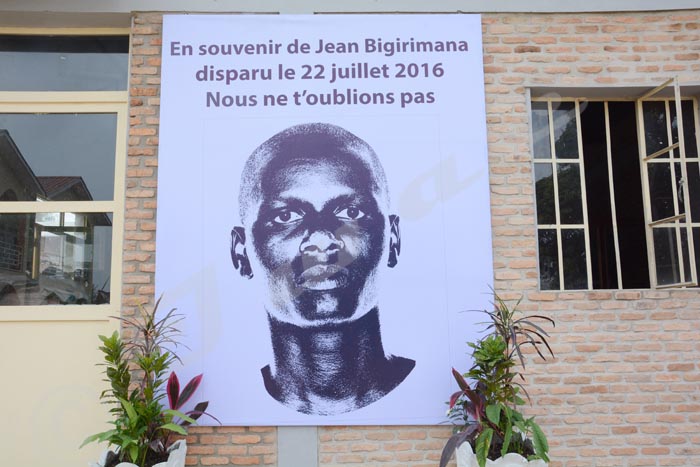
- Five years ago, Abbas Mbazumutima led a team of journalists from the independent Burundian news outlet Iwacu in investigating a story no reporter should ever have to write — about the July 22, 2016 disappearance of their colleague, reporter Jean Bigirimana, who went missing shortly after receiving a call from an intelligence source,” Muthoki Mumo reported Aug. 12 for the Committee to Protect Journalists. They also wrote, “Today, half a decade later, Bigirimana’s disappearance remains unsolved. Mbazumutima told CPJ he believes the journalist is dead while Bigirimana’s family continues to ask for DNA identification of the bodies, according to Iwacu. . . .”
To subscribe at no cost, please send an email to journal-isms+subscribe@groups.io and say who you are.
Facebook users: “Like” “Richard Prince’s Journal-isms” on Facebook.
Follow Richard Prince on Twitter @princeeditor
Richard Prince’s Journal-isms originates from Washington. It began in print before most of us knew what the internet was, and it would like to be referred to as a “column.” Any views expressed in the column are those of the person or organization quoted and not those of any other entity. Send tips, comments and concerns to Richard Prince at journal-isms+owner@
View previous columns (after Feb. 13, 2016).
View previous columns (before Feb. 13, 2016)
- Diversity’s Greatest Hits, 2018 (Jan. 4, 2019)
- Book Notes: Is Taking a Knee Really All That? (Dec. 20, 2018)
- Book Notes: Challenging ’45’ and Proudly Telling the Story (Dec. 18, 2018)
- Book Notes: Get Down With the Legends! (Dec. 11, 2018)
- Journalist Richard Prince w/Joe Madison (Sirius XM, April 18, 2018) (podcast)
- Richard Prince (journalist) (Wikipedia entry)
- February 2018 Podcast: Richard “Dick” Prince on the need for newsroom diversity (Gabriel Greschler, Student Press Law Center, Feb. 26, 2018)
- Diversity’s Greatest Hits, 2017 — Where Will They Take Us in the Year Ahead?
- Book Notes: Best Sellers, Uncovered Treasures, Overlooked History (Dec. 19, 2017)
- An advocate for diversity in the media is still pressing for representation, (Courtland Milloy, Washington Post, Nov. 28, 2017)
- Morgan Global Journalism Review: Journal-isms Journeys On (Aug. 31, 2017)
- Diversity’s Greatest Hits, 2016
- Book Notes: 16 Writers Dish About ‘Chelle,’ the First Lady
- Book Notes: From Coretta to Barack, and in Search of the Godfather
- Journal-isms’ Richard Prince Wants Your Ideas (FishbowlDC, Feb. 26, 2016)
- “JOURNAL-ISMS” IS LATEST TO BEAR BRUNT OF INDUSTRY’S ECONOMIC WOES (Feb. 19, 2016)
- Richard Prince with Charlayne Hunter-Gault,“PBS NewsHour,” “What stagnant diversity means for America’s newsrooms” (Dec. 15, 2015)
- Book Notes: Journalists Follow Their Passions
- Book Notes: Journalists Who Rocked Their World
- Book Notes: Hands Up! Read This!
- Book Notes: New Cosby Bio Looks Like a Best-Seller
- Journo-diversity advocate turns attention to Ezra Klein project (Erik Wemple, Washington Post, March 5, 2014)
When you shop @AmazonSmile, Amazon will make a donation to Journal-Isms Inc. https://t.co/OFkE3Gu0eK
— Richard Prince (@princeeditor) March 16, 2018

